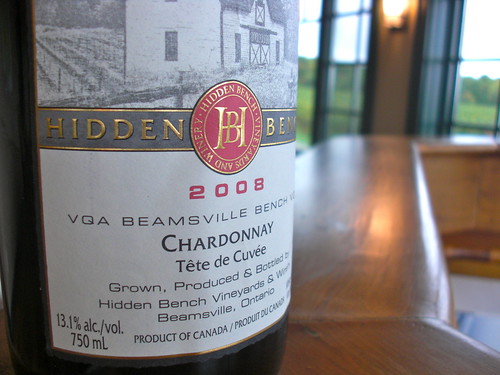
Terroir (I’ve already scared off a lot of you just by uttering that word, haven’t I?) is a wine term that’s overused, abused, mocked and denounced from here to Tasmania.
It has literally lost its meaning with a great many people and, as result, has been knocked down a few pegs to cliché status.
What does it even mean?

It used to be reserved for only the finest wines from Bordeaux and Burgundy, the ones with the big names and hefty pricetags. The ones that Robert Parker and Wine Spectator burdened with 95+ scores. The world’s finest wines were always discussed in terms of terroir this and terroir that.
But, really, when you think about it, almost all wine has a sense of place if it’s from a region and belongs to a specific appellation and shares the same soil and weather.
All grapes, and therefore all wine, are FROM somewhere. It’s really what they do with it, how they grow the grapes, pick the grapes, crush the grapes and nurture the juice through the winemaking process that shapes the wine into something that we commonly call terroir-driven wines.
In Niagara, vignerons are blessed with an abundance of appellations and sub-appellations (and even vineyards within the sub-appellations) that show distinct qualities. And slowly, consumers are becoming aware of the subtleties and nuances of these “sense of place” or “somewhereness” wines.
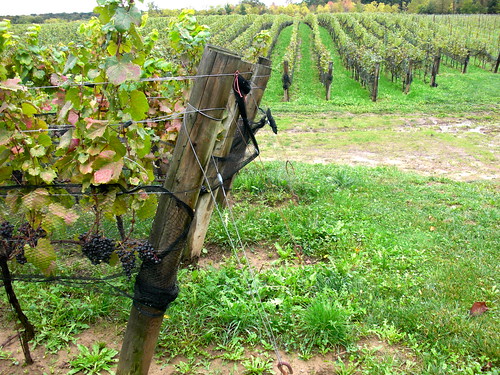
Vinemount Ridge, Cave Spring Vineyard, Triangle, Wood Post, Steel Post, Paul Bosc Vineyard, Red Paw and Black Paw, Nadja’s Vineyard, St. Urban Vineyard, Rosomel Vineyard, Quarry Road, Van Bers, Rock Pile, Delaine Vineyard, St. Davids Bench, David’s Block, Beamsville Bench, Fox Croft, Short Hills Bench, Ghost Creek, Claystone Terrace, Lowrey Vineyard, Talon Ridge … the list goes on. Wines made in these appellations, vineyards and blocks within vineyards arguably have characteristics and personalities that set them apart from other wines, no matter the variety or winemaking styles. They all have that undeniable personality that the vineyard or appellation brings to the table.
A handful (less than a handful, actually) of wineries in Niagara strive for nothing but truly “terroir-driven” wines and have built their entire productions on that very premise; isolating vineyards and blocks within vineyards that are designated to single-vineyard (or block) varieties and blends. These wines are bottled and labelled with the vineyard proudly stamped on the front of the bottle.
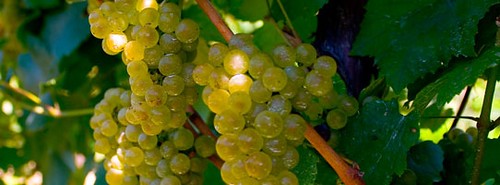
Beamsville’s Hidden Bench Vineyards and Winery is one of the poster boys for single-vineyard, sense of place wines made in Niagara, or more specifically, the Beamsville Bench. And calling these wines “terroir-driven” is anything but cliché.
Of the eight wines just released this fall, six of them are single-vineyard, estate wines, while the other two are blends of single vineyards at the estate.

“These are all terroir wines,” Jay Johnston, associate winemaker at Hidden Bench, tells me with conviction. “We only make wine from what we grow. These are all estate wines and, for us, that means Beamsville Bench.”
Hidden Bench backs up its philosophy with a mission statement you can read here and also adheres to five basic principals, also posted on the Hidden Bench website:
1) Great wines are created in the vineyard where our winemaking starts. Sustainable practices coupled with a tremendous amount of hand labour permit us to keep our vines in balance and to manage our reduced yields.
2) Clean fresh fruit produces superior wine and, as such, we individually bunch sort all of our white wine varietals and bunch sort and then individual berry sort all of our red wine varietals.
3) Less is more summarizes our non-interventionist, minimalist wine making approach.
4) Gentle handling of the wine throughout the winemaking process.
5) Patience, patience, patience, and then just a bit more patience.
This philosophy and attention to quality in the vineyards and winemaking from both winemaker Marlize Beyers and Johnston, working under the direction of owner Harald Thiel, has been a winning combination for Hidden Bench.
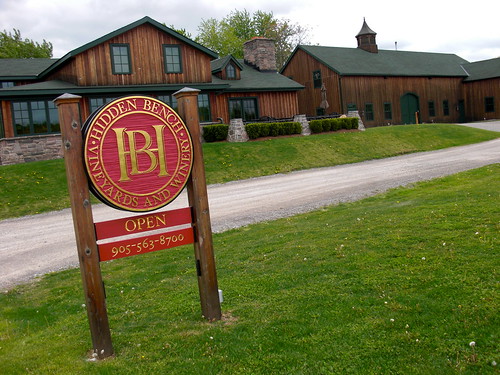
Many of Niagara’s most exciting wines are crafted there from grapes grown in its three vineyards: Rosomel, Felseck and Locust Lane.
Hidden Bench owns and farms these three vineyards on the Beamsville Bench. Currently, 48 acres are in actual production with the remaining 24 acres being part of its current replanting and redevelopment program, which will see production rise from 3,500 cases in 2010 to over 6,000 cases in 2011.
The oldest blocks are Chardonnay and Riesling vines that were planted in 1976-1977 at the Rosomel Vineyard, one of the most storied vineyards in all of Ontario.
I sat down with Johnston to taste the fall release wines recently. Here is what we tasted:
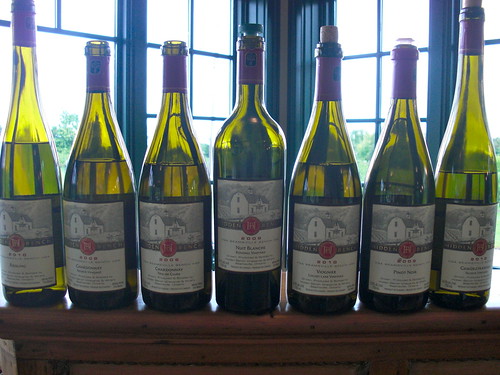
Hidden Bench Chardonnay Tete de Cuvee 2008 ($45, only 100 or so bottles remain at the winery, 94 points) — That is the highest mark I have ever given a Chardonnay in Niagara. And I might be underestimating it. This is perfection in a glass, or as close to it as it comes. The top Chardonnay at the estate takes the best barrels of fruit from Locust Lane and Rosomel and blends them into this magnificent cuvee.
The 2008 vintage, in my opinion, is one of the finest for Chardonnay Niagara has seen in a while. It was rainy during the summer, but heat and sun at the end of the season and an excellent veraison period contributed to ripe, elegant and balanced Chardonnays.
The wine spends 15 months in French oak with weekly lees stirring for the first 10 months. It is bottled unfined and unfiltered and is fermented with indigenous yeast.
The nose is spectacular with gorgeous minerality, bright lemon and white peach fruits and hinting at oak, nut and spice accents. It is a pure expression of the stony minerality derived from the Beamsville Bench’s clay-silt-limestone soil. It is such a gloriously layered and textured Chard, with citrus-lemon, laser-sharp acidity, stone fruit, and spicy notes that are integrated rather than over-powering. This beauty is the epitome of elegant Beamsville Bench Chardonnay, with a long, lingering finish. It is built to cellar up to 10 years. Hurry, though, very few bottles remain for sale.
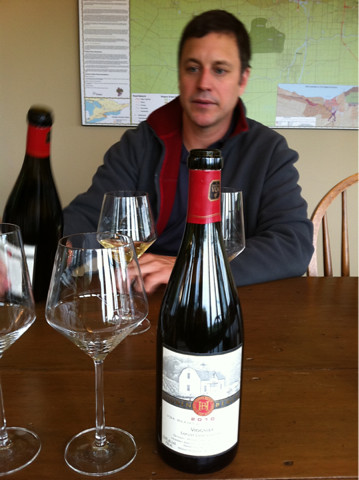
Hidden Bench Estate Riesling 2010 ($22, not released yet, 90 points) — This is usually a blend of the three vineyards at the estate, but in 2010, though it doesn’t say so on the label, it is 100% Locust Lane fruit. This is the first vintage that Beyers, who replaced J-M Bouchard, has made as winemaker. The nose shows pronounced and juicy grapefruit-citrus fruit, minerality that will continue to develop and hinting at soft tropical fruits. Despite the heat of the vintage, and because of the early pick on Sept. 25, the wine retains a healthy dose of natural acidity on the palate. But still, it is a ripe and juicy style of Riesling with sweet-tart grapefruit and wet stone minerals.
Hidden Bench Locust Lane Viognier 2010 ($35, wine club members only, 89 points) — Only three barrels of this wine club-only Viognier are made at Hidden Bench but the good news is that more has been planted. The nose shows pretty floral notes, stone fruits and touches of tropical fruit, spice and honey. It’s quite rich on the palate, a touch soft and fleshy but has length through the palate.
Hidden Bench Felseck Vineyard Chardonnay 2008 ($38, winery, 92 points) — This Chard is from east-west rows of vines planted in the early 80s and 90s in the Felseck Vineyard. It’s another gorgeous Chard with a generous nose of apple, mineral, sweet spice and nutty-caramel notes. It has layers of pleasure in the mouth with creamy vanilla, butterscotch, spiced apple and juicy acidity. Good now, but will improve in the bottle.
Hidden Bench Rosomel Vineyard Nuit Blanche 2009 ($40, winery, 91 points) — This is Hidden Bench’s proprietary single-vineyard white blend that consists of 90% Sauvignon Blanc and 10% Semillon. It is barrel fermented in neutral oak using wild yeasts. It is tight and youthful at the moment and decanting or aging is suggested. The nose, once opened up, shows grapefruit, smoke, herbs, melon and lime cordial. It has wonderful verve and intensity on the palate with expressive grapefruit-citrus notes and a touch of marzipan in a racy style. This wine will better integrate with time in the cellar.

Hidden Bench Estate Pinot Noir 2009 ($38, winery, 91 points) — From a blend of Pinot Noir grapes grown in the three estate vineyards from a vintage that is proving perfect for cool-climate Ontario Pinot due to a warm late August and September. This wine spends 16 months in French barrels and is finished unfiltered and unfined and no sees no pumping during the winemaking process. The nose shows concentrated cherry fruit, savoury notes, beetroot, barnyard and pencil shavings. In the mouth it shows tart cran-cherry fruit, wild raspberry, toasty spices, silky tannins en route to a long, creamy finish. Very interesting and inspiring Pinot from Beamsville Bench that will age beautifully.
Hidden Bench Locust Lane Vineyard Pinot Noir 2008 ($55, winery, 89 points) — To give you an indication of the difference between 2009 and 2008, Hidden Bench lost about 5% of its Pinot Noir fruit on the sorting table. In 2008 that number was closer to 40%. Hand sorting, picking, thinning and low yields in 2008 were crucial to making good wines in the somewhat difficult 2008 vintage for red wines. This top cuvee shows lovely cherry fruit, vanilla, minerals and savoury spices on the nose. In the mouth look for bramble fruit to go with cherry and raspberry, some roasted herbs and stony minerality all on a bed of tight tannins and sharp acidity. Can benefit from some cellaring.
Hidden Bench Felseck Vineyard Gewurztraminer 2010 ($32, winery, 92+ points) — Hidden Bench picked the Gewurz grapes in two passes to retain the acidity in the early pick and to reach the desired ripeness in the later pick. The result is a more balanced approach to this exotic varietal. The beautiful nose shows lychee, orange peel, honey, cloves and allspice. It’s simply spectacular in the mouth with lush mango, grapefruit, candied tropical fruits, lychee nut, ginger and cloves yet still displays a note of freshness through the finish. Such a delicious expression of this personable grape.
Enjoy!







Comment here